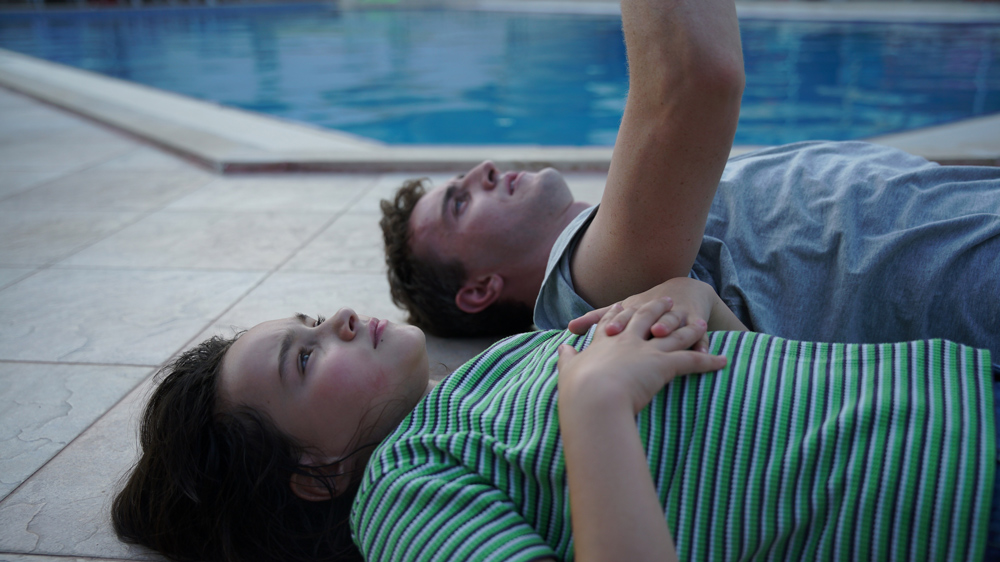!["Aftersun" Director Charlotte Wells Every work is personal to the person who directs it [Director's Interview Vol.315]](https://cinemore.jp/images/ef66412c00752f605b4c4ae4ad79edbe97a3929ad905e571f62cd2f27a13fddf.jpg)
© Turkish Riviera Run Club Limited, British Broadcasting Corporation, The British Film Institute & Tango 2022
"Aftersun" Director Charlotte Wells Every work is personal to the person who directs it [Director's Interview Vol.315]
The power of Bowie and Queen's music
Q: The music is really impressive too: Blur's " Tender ," REM's " Losing My Religion ," and Bran Van 3000's " Drinking in LA " playing in the pool. That's a fun use of it.
Wells: I especially like " Drinking in LA ." There was something about it that really drew me in. I picked it because I liked it, and it's used as the background for a scene. One night, Jovan Eidel, the sound designer, said to me at work, "I want to show you something before you go home." It was past midnight and I wanted to go home early. He used this song for the scene where the characters dive into the pool, and it really expressed the characters' feelings of meeting and aspiration. Sophie, the little girl, wants to be part of the world, but the time hasn't come yet. But there's a sense of discovery in that scene. I really liked how it was used as a clue for the whole thing.
Bran Van 3000 - Drinking in LA Music Video
Q: Of course, the most important song in the film is " Under Pressure " by Queen and David Bowie.
Wells: This song created an unexpected effect. It's a scene that sums up the theme of the movie. Freddie Mercury's voice conveys desperate emotions, and it blends beautifully with Bowie's romantic sensibility, and his vocals have a strong power. I used it at the climax because I thought it would go well with the dance scene. This song overlaps well with the score composed by Oliver Coates, and I think it became a great scene.
Q: This film makes effective use of images of reflections, such as faces in a mirror and silhouettes seen through windows. Was this written into the script from the beginning?
Wells: I wrote some of it down. I like the technique of layering multiple images. Greg (Gregory Oak), the cinematographer, likes to shoot images that reflect, so I took that into consideration when I thought about the overall composition. Also, in terms of the effect as a story, I thought it was interesting that by projecting her father through these reflections and shadows, Sophie's image of her father becomes more mysterious.

“Aftersun” © Turkish Riviera Run Club Limited, British Broadcasting Corporation, The British Film Institute & Tango 2022
Q: I've heard that you start making a film with a particular image in mind. In this case, was there an image that inspired you?
Wells: There were a few. The scene where his father, Callum, smokes a cigarette on the balcony. I thought about whether to actually use this image of him in the film until the very last moment. I also thought of the scene where he makes Sophie dance as a long cut without a transition. I thought it was an important scene to draw the audience into the film. I think that having such a scene makes the film truly worth watching for those who are watching closely to see what happens next.
I also thought about the scene where Sophie sleeps leaning on her father's shoulder, and I felt that it would convey the intimacy and warmth between the two of them. Arriving late at night in a foreign country and seeing nothing but the light on the hilltop. That's something I experienced on a package tour when I was a child. There were some images that I ended up using in the film and some that I didn't.
The joy of collaborating with actors

